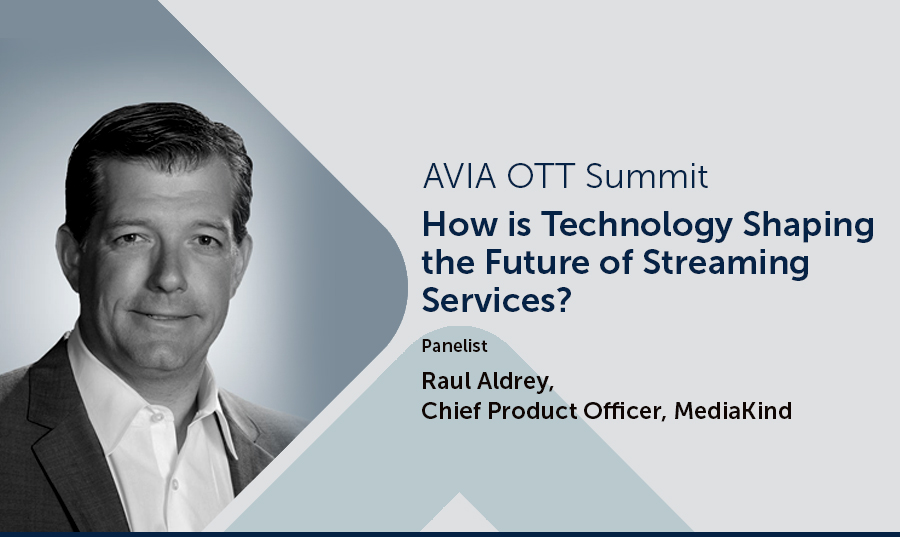“OTT – it’s just a new way of doing old things” – that was one of the takeaway phrases that I noted down during my recent panel session at the AVIA OTT Summit. This phrase is a nice way to summarize where the media industry is right now. In the world of streaming, we’ve essentially mastered the art of on-demand and file-based content delivery. In some ways, the world of streaming reflects more recent media trends. The majority of streamed content is time-shifted, and the industry has concentrated on the challenges of distributing that type of content at scale.
However, streaming live events is a different beast. I blogged recently about the complexity of live sports streaming because there are so many various aspects to consider – anything from frame accuracy, managing multiple camera angles, and delivering rich end-user experiences that maintain these facets and more. All of the complex issues of streaming remain for live delivery – the sheer scale, contribution, and the many hoops in the chain as the content goes from being encoded, packaged, transcoded into correct file formats, and then tailored for monetization.
But we have come a long way in this past decade, a point noted during the aforementioned panel session by Sardjono Insani, Director, Media Engineering & Operations, Walt Disney. Traditional broadcast TV is no longer the benchmark against which all OTT services are measured. OTT has helped raise the bar for the overall user experience in terms of interactivity and engagement opportunities. It has provided the inherent flexibility with which to watch content on any device and from any location.
The rise of live video streaming services
Another of my fellow panelists Sunita Kaur, SVP APAC at Twitch, relayed a wonderful anecdote on how she explained the purpose of her company to her parents. She asked them to consider: “what would TV sound like if it could talk back to me?” Twitch, Facebook, YouTube and many other live streamed, user-generated content platforms are now enabling us to answer that question for real, as we’re now able to engage with the TV experience itself. Whether we’re speaking out loud, sharing clips, images, GIFs, playing games, or simply ‘liking’ or commenting on something – our voice is being amplified.
The impact of these platforms in today’s streaming world are enabling broadcasters to make immediate two-way connections with their audiences. Twitch, of course, emerged from the gaming community, allowing gamers to access communities of like-minded fans to watch, chat and attend various events, as well as broadcast their own competitions. The model of social connectivity is successful thanks to its simplicity – easy compatibility across multiple platforms and the ability to communicate at the click of a button. You can respond to one of the world’s biggest eSports gamers based in New Delhi just as quickly as you would a teenager in their bedroom in Tokyo. We have the choice to watch whatever we want, whenever we want. As Sunita herself put it, “the power is in the viewer’s hands.”
Social engagement and opportunities in the viewing experience
When you think about it, this is the next stage in our industry’s innovation story. To date, we have concentrated heavily on delivering streaming experiences that replicate broadcast standards – that’s fundamental to the growth and sustainability of streaming as a delivery mechanism. It removes geographical barriers, and it democratizes the devices on which we can watch our favorite shows. But the user experience itself is the next frontier for delivery over the internet. We need to hyper-personalize experiences and fans need even more power to dictate the way they interact with their content.
The opportunities for the future are really exciting. For instance, in a sports context, fans can follow a particular player or game with their friends in a different household. We could see developments in instant live voting or the rapid availability of exclusive short video clips. For fans in the stadium, this could mean augmented reality experiences or personalized camera angles on mobile screens.
But interactivity and engagement aren’t just a social activity in the physical and virtual sense – it’s also an opportunity for content owners and service providers to open up other new means of monetizing their content. One of the key takeaways from the MediaKind 2021 Sports D2C Forecast was that standalone sports direct-to-consumer (D2C) services rarely utilize additional monetization features, regardless of the delivery mechanism and end-user device. Among the D2C services offered by the 40 rights-holders we analyzed in our report:
- 8% used advertising features
- 5% provided merchandising opportunities
- And just one rights-holder provided a mechanism for ticketing
Most importantly, none of the 40 rights-holders had an integrated betting provision within its D2C service. We expect that to change dramatically in the coming years, particularly in the US, which oversaw the legalization of sports betting in 2018. Regardless of geography, enabling micro-transactions in the content will be a potent tool over the next five years.
Overcoming the technology challenges
There is a plethora of practical use cases available to broadcasters looking to boost audience engagement and interaction. However, these tools have to be built on top of a robust layer that can cope with the granularity needed within live broadcasts – particularly in sports. Technologies that help broadcasters digest what’s happening in the video are helping these possibilities come to fruition. We have content replacement tools, ad technologies that mark and tag different parts of a video, and Artificial Intelligence that allows broadcasters to create dynamic metadata.
These technologies are now combined with newer developments in streaming technology, most notably low-latency streaming. A predictable low-latency feed synchronized with metadata down to the frame-accuracy level that can be replicated across different streams allows the content to be coordinated, unlocking exciting gaming and betting use cases, among other areas.
The key is to enable a framework that opens up access to all of that functionality. It needs to be done in a way that’s very easy for developers and front-end app developers to gain access to the framework. We need to see more personalization elements within the live feeds – whether it’s seeing highlights based on content preferences or exciting behind-the-scenes insights into entertainment acts, sports teams, or athletes.
The future of OTT in the sports market is a fascinating prospect. The way sports leagues are negotiating and distributing rights has been predominately around optimizing the broadcast output. That’s where the traditional wide-scale revenues have existed. With the proliferation of OTT, there are now new ways to monetize streaming content and new distribution right models that are emerging rapidly. This is just the beginning of a global transformation.



